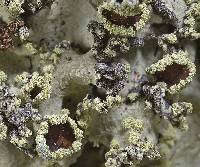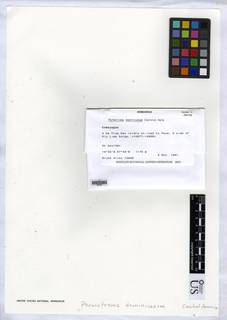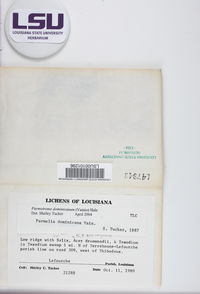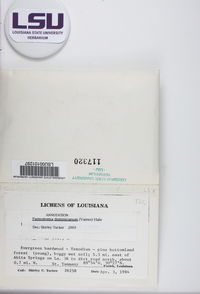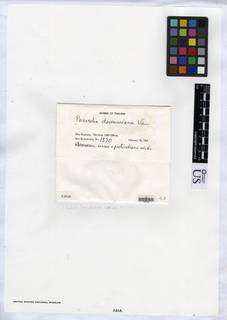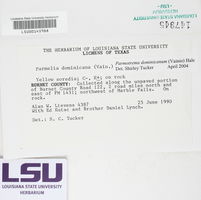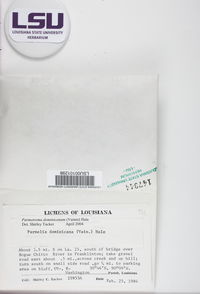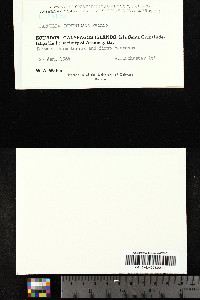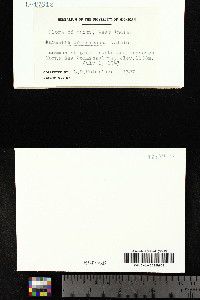
- Home
- Search
- Images
- Species Checklists
- US States: O-Z >
- US National Parks
- Central America
- South America
- US National Parks
- Southern Subpolar Region
|
|
|
|
Family: Parmeliaceae
[Parmelia dominicana Vain.] |
MycoBank no. 343043 Type: Dominican Republic. Hispaniola: Soufrière Hills, Crater, Elliott, W.R. 114 (TUR – holotype, fide Hale 1965). Description. Thallus corticolous; upper surface pale greenish yellow, dull, emaculate, smooth, not wrinkled, occasionally Chemistry. Cortex with both usnic acid and atranorin [P+ yellow, K+ yellow, KC–, C–, UV–]; medulla with protocetraric acid only [P+ yellow turning orange, K+ dirty yellowish brown, KC–, C–, UV–]; one analyzed specimen (Herrera-Campos, M.A. 10594, CDS 40331) additionally contains traces of echinocarpic acid [its medulla reacts KC± rosé to faintly orange]. Ecology and distribution. North, Central and South America, Africa, Hawaii (Hale 1965; Egan et al. 2016). First reported from the Galapagos by Weber (1981, 1986), subsequently by Elix & McCarthy (1998) and online (Bungartz et al. 2016). A common species, particularly throughout the coastal zone and dry zone, less abundant in the transition zone, only very rarely found in the humid zone; most specimens grow on bark, few on rock, typically in sunny, wind- and rain-exposed, less frequently ± shaded and sheltered habitats; most commonly found on Bursera or generally dry zone vegetation, i.e., Erythrina or Zanthoxyllum trees, Croton scrub and cacti (Jasminocereus, Opuntia), along the coast also in mangroves (Laguncularia, Hippomane); one specimen was collected in the agricultural area of Santa Cruz, on Cedrela. Notes. For differences from the newly described P. lawreyi, see the description there. |
|
|
|




